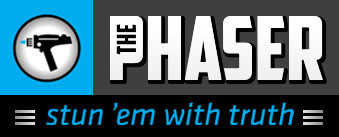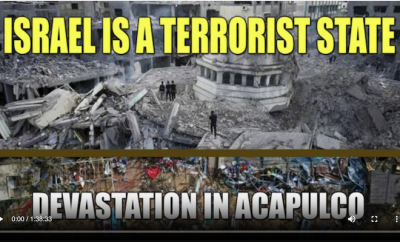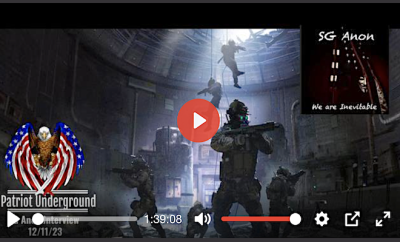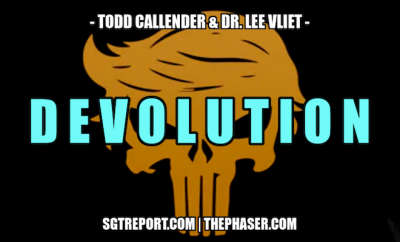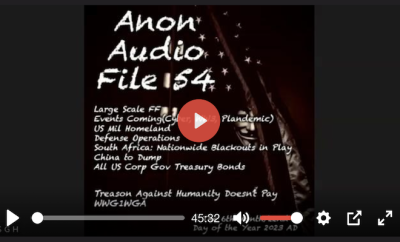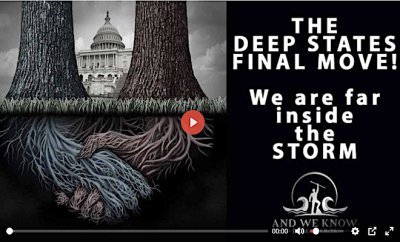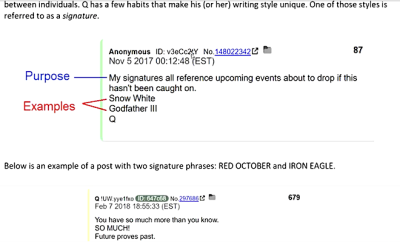 Andreas Herzau / DER SPIEGEL
Andreas Herzau / DER SPIEGEL
Featured
The German Road: Congo Project Shows Pitfalls of Development Aid
by Samiha Shafy, via spiegel.de:
One of Germany’s largest relief organizations has built a road through the jungle leading from war-torn North Kivu to a major river in the Congo. The project has demonstrated the limits of development aid in a stateless region.
The wet black road, full of potholes, begins just behind the city of Goma on Lake Kivu. It’s the only road leading westward into the jungle from here. A stream ripples just off the right shoulder, where women can be seen kneeling in the water as they scrub clothes and fill canisters; some carry babies on their backs as the morning sun struggles weakly through the rain clouds. A man is standing on the road. His name is Georg Dörken.
Strongly built with large hands, Dörken has graying hair on either side of his bald head and an imposing moustache. He wears a golden stud, a gift from his wife. The logo of his employer, Welthungerhilfe, is emblazoned on his polo shirt, one of Germany’s largest relief organizations.
The road is Dörken’s baby, most of it having been built under his direction over the course of nine years, between 2002 and 2011, by Welthungerhilfe. As the group’s program director in Congo, he risked life and limb for the road: He’s been shot at, threatened by child soldiers and was once almost kidnapped. On one occasion, his car stopped just a hair from an anti-tank mine, on another he survived an emergency landing when the plane he was riding in crashed onto a car. He’s had to flee and be flown out on multiple occasions. As he watched his road slowly stretch into the jungle, his son and daughter were growing up in faraway Germany.
The Worst Conflict Since WWII
Dörken always had his eyes on a major goal: to save eastern Congo and to end a civil war that has likely cost more lives than all armed conflicts together since World War II.
Now, he wants to once again journey down this German road through a broken country, from Goma to Kisangani. He wants to see if the hope that this road embodies has become reality and whether Africa’s second biggest country, one of the poorest in the world, is actually capable of creating something akin to prosperity and peace.
The Democratic Republic of Congo is rated number four on the list of “Fragile States” published by Foreign Policy magazine. It is second to last on the United Nations’ Human Development Index of 187 countries. Indeed, if there’s any country in the world that needs help, it’s Congo.
It’s also a country well worth visiting for those wanting to understand the impact global development aid, a business worth $135 billion a year, can have on a country — and where the limits of such aid are.
Dörken takes a few steps down his road, bending and stretching his fingers in preparation for the drive. He then gets into one of two white SUVs and gives the order to head out. He is traveling with three Congolese employees — two drivers and a safety officer — but he isn’t carrying a weapon or wearing a bullet-proof vest. He doesn’t want to get killed just because some rebel wants his Kevlar, he said prior to departure.
The drive along the first stretch of National Road N2, a section of between 15 and 20 kilometers, feels a bit like taking a ride on a stubborn horse. This isn’t Dörken’s fault. This part of the road is the legacy of the Belgian colonial era, which ended in 1960. “If there’s anything Belgium left behind, then it’s a great transportation infrastructure,” Dörken says. “But since then, nothing more has been done.”
The first stretch built by Welthungerhilfe starts at Kilometer 29 in the small town of Sake. From there, Dörken’s trip will continue to the northwest, right through the middle of the Congolese war, through the jungle and mud-hut villages. In total, the road is 613-kilometers (381-miles) long, stretching all the way to Kisangani, a city on the shores of the country’s namesake: the Congo River.
A Broken Breadbasket
Along the road, one mostly sees vehicles belonging to aid organizations such as Doctors without Borders and the Catholic charity Caritas, but also the occasional red motorcycle taxi of the kind manufactured in China. The people walking the muddy road, even the children, tend to carry their loads on a belt hanging from their foreheads. They bend slightly forward, with their bundles on their backs as they trudge along. The more fortunate ones have bicycles or a Tchoukoudou, a sort of makeshift wooden scooter. Getting from one place to the next is a real ordeal. Add to this poor nutrition, polluted water, epidemics and the ravages of war and it calculates to an average life expectancy of 48 years for men in Congo and 52 for women.
With its mild climate and fertile soil, Goma, the capital city of the province of North Kivu, where Dörken’s road begins, once served as the country’s breadbasket. But 21 years ago, genocide in Rwanda caused the conflict to spill over into Congo. With over 5 million thought to have been killed thus far, it has become known as “Africa’s world war.” The breadbasket has been destroyed and its residents suffer from famine.
Furthermore, they are also cut off from the rest of the world because Congo has only 2,794 kilometers (1,736 miles) of paved roads. That’s 642,206 kilometers fewer than in Germany, a country that is seven times smaller than Congo. There are almost no trains in the country, and those who can afford to travel by plane. But most go on foot.
This applies to the police as well. Jeanne Mawiza Trambisa, the police chief of Sake, says she would love to have a car, or at least a motorcycle. The remains of two police cars and four rusty motorcycles can be seen on the street in front of police headquarters. Speaking in her tiny office, Trambisa laments the lack of money to buy new police vehicles. Dörken sits in front of her on a plastic chair, absorbing what she has to say. The police commissioner, who wears traditional clothing with a color-coordinated headscarf, is in charge of 33 police stations and 467 law enforcement officers. But what use is it to Trambisa if her police are only capable of hunting criminals on foot?
Improved Prospects?
Back in 2001, relief workers at Welthungerhilfe — known in English at the time as German Agro Action — thought a road might provide people here with better prospects for the future. The fertile land surrounding Goma, after all, hadn’t been destroyed — it would just have to be re-cultivated. If it were possible, they thought, to transport coffee, grains and vegetables from North Kivu through the northeast to the Congo River, the goods could then be shipped onward and sold.
And perhaps, the Germans thought, it would be possible to convince the marauding rebel gangs to put down their weapons if they had a viable alternative to murder and plundering. Why not a future in road construction, agriculture and trade? In this way, the road would not only help fight hunger, it would also help ensure peace.
The logic behind the idea was irresistible, a product of the German belief in order and structure — and in a higher authority that makes it possible. In Germany, that role is held by the state. In Eastern Congo, where there is no functioning state, that role was to be filled by Welthungerhilfe.
Prior to this project, the organization hadn’t had any experience in road construction. Although it wasn’t Dörken’s idea, he found it to be a good one when, a year later, he assumed the role of program director in 2002. Dörken, who had previously worked for the German development agency GIZ in Congo, also had no experience in road construction. His main areas of focus had been tropical and subtropical farming. But he felt he had to try things if he was going to accomplish anything here.
He and his new colleagues went to the villages to promote their idea. In the beginning, things seemed promising. Hundreds of rebels answered their call, trading Kalashnikovs for machetes and clearing a lane through the jungle.
And today, a few years later?
Relief organizations cannot replace the state in the long run. The hope among aid workers was that the state would continue what they had started — that it would not only maintain the road, but also take pains to ensure it remained safe to navigate.
Police commissioner Trambisa says the most common problems in Sake are violent crime and theft. Things have improved in the sense that fewer women are getting raped after the rebel group M23 was driven out at the end of 2013. “I am reaping what Monusco sowed,” the commissioner says, Monusco being the name of the 21,000-strong United Nations stabilization mission in the region. Its troops spent most of their 15-year mission entrenched in their bases as murder, rape and plundering took place all around them. Peace-keeping became a euphemism for doing nothing. But during the summer of 2013, an intervention brigade was deployed that fought the armed groups. Together with the Congolese army, they drove back M23. Today, they mostly fight rebels with FDLR who are active in the area.
Police Chief Trambisa says she passes on all problems that get reported to her to the nearest UN bases, “because we can’t get anything done without the Monusco,” she says. Trambisa says she fled when M23 occupied her city, but after it was liberated, she was escorted by UN peacekeeping soldiers back to Sake. “With 12 vehicles,” the police chief says, chuckling contently. “I’ve been considered a grand dame here ever since.”
State Still Unable to Take over UN’s Work
As Dörken reaches out his hand to say goodbye, he clutches his right wrist with his left hand, a gesture of respect for the grand dame. The police chief smiles. But Dörken’s tone darkens. The first problem is that the state is still unable to take over the work done by aid workers in Sake. There’s just the UN. And second, the UN here advises against continuing on the road beyond Sake.
The reason is that the front line lies just beyond the city. The UN has marked a 163-kilometer stretch of the road on its maps from Sake to Walikale in red, designating it as a danger zone. Those wanting to head onwards to Walikale need an escort, says the colonel in charge. Plus, he says, the road is in poor condition, adding that a convoy got stuck just three days ago.
Dörken decides to venture eight kilometers into the danger zone to see what is fueling Africa’s civil war. There, a dirt track forks off the main road to the north. The track presents an even more challenging test for the SUVs. A coltan mine is located at the end, another symbol of a potentially better future for the war-torn country.
Untapped Resources
Rich in natural-resources as it is, Congo could be a prosperous country. In addition to plentiful water, fertile soil and exceptional biodiversity, coltan, used in computers and mobile phones, can also be found. In addition, there are deposits of gold, diamonds, tin, copper, uranium and crude oil. But these deposits have also fueled fighting.
The coltan mine in Bibatama is a red chasm cut between two gentle hillsides. One has to get close to the edge in order to see the workers below, tiny figures with helmets and shovels who hike up and down the slopes. A zig-zagging path leads down into the mine; the journey takes three-quarters of an hour, with more of it spent sliding than walking.
Geologist Eddy Mundenga, who works in Goma for mine operator MH International, leads the way, slipping and sliding. Each day between 300 (660 pounds) and 400 kilograms of coltan are extracted here, he says, wheezing and sweaty. Workers are paid based on their yields — some days it’s $3 and others it can be more, depending on how much coltan they mine. There is no other way out, so each miner carries his sack of ore back up the path each evening.
Three dollars a day is the legal minimum wage in Congo, but it’s a sum that most Congolese never see. Per capita income in the country is about $400 a year and three-quarters of the population lives below the poverty line.
But the operators of the Bibatama coltan mine want to set an example. They became one of the first mines to apply for a certification — a seal of approval provided through mineral certification by the German Federal Institute for Geosciences and Natural Resources (BGR). It allows the operator to show that it produces “conflict-free” coltan, that it does not exploit children or adults and that it is environmentally friendly.
Until just a few years ago, around 70 percent of all mines producing coltan, tin or gold were controlled by armed groups. Today, says BGR, the share is far lower due to the disarming of several rebel groups and an official ban on artisanal mining. The German certification is also intended to make it more difficult for warlords to finance themselves by way of smuggling or by collecting protection money or illegal taxes. In the last six years, BGR has certified around a half-dozen mines, but The German database lists a total of 1,600 mines in Congo.
Immense Work
Georg Dörken shakes his head when he hears the number. Here too, the job facing aid workers is immense.
Dörken follows the dirt track back to the road and returns to Goma via Sake. Having changed plans, he now charters a propeller plane from a company named Busy Bee Congo to fly him over the red zone. Between Goma and his destination of Lubutu, there are roughly 300 kilometers of jungle, a spectacular landscape of riotous green crisscrossed by winding brown rivers. Every now and then, one can make out a narrow, red line cutting through the primeval forest. It’s Dörken’s dirt road.
In his first career, Dörken worked as physical therapist. At age 25, he already owned two practices and a sauna in the western German town of Wuppertal — but he soon found himself wondering if that is how he would spend his life. He sold the practices, took a trip around the world and went to college. He then traveled to Burkina Faso with the German Development Service to help improve farming techniques. Barbara, the woman who would later become his wife, joined him on the trip as well.
In February of 1994, German development organization GIZ sent him to Congo, which was still called Zaire at the time, to lead an environmental preservation project. His wife and child came along. “We stumbled into the conflict in a totally naïve way,” Dörken says. “I was told that if unrest develops in Zaire, we should flee to Rwanda.”
Africa’s World War
The genocide in Rwanda began not even two months after his arrival in Zaire, with extremist Hutus slaughtering 800,000 Tutsis and moderate Hutus. The Dörkens lived on Lake Kivu, near the border. Sometimes, he said, they would turn up their stereo so as to drown out the screams of those being killed nearby; corpses would float by in the lake. When a Tutsi army, trained in Ugandan exile, reconquered Rwanda, one-and-a-half million Hutus, many murderers among them, fled across the border into Zaire. Dörken’s project was halted and he and his staff were ordered to supply refugee camps with firewood.
At the end of 1996, a rebel alliance under the leadership of Laurent-Désiré Kabila conquered eastern Zaire to hunt down those who participated in the mass slaughter in Rwanda. For two days, the Dörken’s withstood the artillery fire before Barbara and the two children could be flown out. Georg Dörken stayed behind and was still in the country when the dictator Mobutu was toppled and Kabila, supported by the Tutsi government in Rwanda, took over. He watched as the war initially waned before returning with a vengeance.
Ultimately, seven countries became involved in Africa’s world war, including at least 30 militia groups. In January 2001, Kabila was murdered and his son Joseph has been in charge ever since. And the conflict keeps going, a bewildering mixture of civil war, organized crime and failed state.
His wife convinced Dörken to return to Germany, where he got a job with Welthungerhilfe, but after a brief period of being based in Bonn, he found himself back in eastern Congo in the fall of 2004. Dörken’s employer is a major player in the battle against global hunger and poverty and normally the group supplies food, water, blankets and tents to people in crisis areas. After basic needs have been met, the group does other things, such as helping farmers improve their yields. But what can be done in a situation as chaotic as the one in eastern Congo?
His doctor told Dörken once: “Better to die happy in eastern Congo than unhappy in Bonn.” He insists that he is not a “crisis junkie,” adding that it is important to him not to be seen as such. “But there are risks associated with my job that I have to accept.” He then remains silent for a moment. “I guess I’m just devoted to what I do,” he says.
The airplane has landed in Lubutu. A single policeman, largely ignored, stands at the main intersection in the city center. He blows his whistle every now and then, but mostly he stares motionless at the chaos before him. Just behind the intersection is the market, a maze of narrow streets full of dried fish, bloody pieces of meat and odds-and-ends laid out on boards.
Jacqueline Kangakolo is sitting in front of her stand, an older woman wearing a black headscarf and a skirt printed with butterflies. She tells Dörken that the road only helped her as it was being built because the workers and their families had money and some of them shopped at her stand. But since the road’s completion, she says, jobs have been scarce. Furthermore, Doctors Without Borders closed the hospital in Lubutu and she has fewer customers as a result, Kangokolo says.
A Sisyphean Task
Kangokolo is Dörken’s crown witness that the road has also failed to fulfill his second hope, that of stimulating the economy. At least it has failed to improve the lots of the market sellers in Lubutu.
He respects the women of Congo, Dörken says after his chat with Kangokolo. When he looks around, he says, “I see women who are working and men who are standing about.”
From Lubutu, it is possible to drive back towards Goma for the 205 kilometers (128 miles) to Walikale, where the UN red zone begins. For hours, no other cars can be seen on the stretch. Instead, children with bloated bellies wave and call out as soon as they see the Welthungerhilfe vehicle. Laundry has been laid on the road to dry, with chickens and goats resting nearby. A unique driving style is necessary to slalom through the potholes and livestock.
Were it possible to drive the entire distance from Goma to Lubutu, there would be traffic here too, Dörken says, particularly trucks carrying foodstuffs to the Congo River. But there are two problems. First, the war is not over. And second, the road is still a Sisyphean task under German control and not yet a Congolese highway. A part of it gets built and then the aid workers go elsewhere. Soon the first potholes form and the jungle begins to gnaw away at the shoulders of the road. Ultimately, it will disappear completely.
Welthungerhilfe is now building a section of road heading south from Lubutu and has committed to maintaining this new, flawless red-earthen highway until 2016. But what happens after that? Dörken hesitates. “Honestly, I wouldn’t dare to venture a guess.”
Originally, he and his colleagues had set up a system to maintain the road. They established “road committees” in the villages which then installed barriers to collect tolls. Revenues were to go toward maintenance work. The system worked well, Dörken says, but then the Congolese government in 2006 revoked Welthungerhilfe’s mandate for maintaining the road. Since then, tolls have continued to be collected, but the money is no longer reinvested in the road and it is slowly disintegrating as a result.
Isn’t that frustrating? “Yes, of course!” says Dörken, losing his ironic distance for an instant. Then, once again under control, he summarizes the entire problem with development aid in a single sentence: “We are waiting for the state to begin fulfilling its duties.”
Meeting a Rebel
The village of Tingi-Tingi, 10 kilometers from Lubutu, is a collection of adobe shacks straddling the road. It is the home of a young man who, like so many other young men, joined the rebellion in eastern Congo. Dörken’s people helped arrange a meeting with him, though he himself is not entirely comfortable with their having done so. Still, he also wants to know more about these rebels who prevent his road from becoming a reality.
François Amangeni, 34, a small, wiry man, wears an open shirt and green sweat pants. He was only 14 when the war came to Tingi-Tingi. Amangeni is standing on the road — his legs spread wide and arms crossed — speaking quietly and rapidly with his gaze cast downward. First, the Congolese soldiers arrived, shooting his brother dead and raping his sister, he says. His family was forced to flee into the forest, where they had little to eat and had to drink water from a stream. His aunt then succumbed to diarrhea.
After Mobutu’s troops, the refugees from Rwanda were the next to arrive. They were then followed by Kabila’s rebels, whose arrival marked the bloodiest wave of violence, culminating in the massacre of Tingi-Tingi. “The Rwandans came and found the refugees,” Amangeni says. “They killed a lot of them, at least tens of thousands.” The mass graves are everywhere, he says, gesturing at the surrounding forest.
Amangeni joined one of the many local militias, called Maji-Maji, to fight the Rwandans. He proudly shows the scars on his breast and arms, sliced into his skin by razorblades to produce the symbols worn by Maji-Maji fighters. He and his comrades would sneak up on Rwandan army checkpoints and fire away. Amangeni claims he doesn’t know how many people he killed, but says his group was focused on defending their land. He fought for a year and seven months, he says, before returning to his family.
Now, he has two wives and four children but no income; the family cultivates cassava, rice and banana trees. “If someone comes again and threatens us, I am prepared to immediately rejoin Maji-Maji,” Amangeni says. Many of his former comrades remained in the group, but they no longer fight against intruders. Instead, they make their living by way of plundering and murder.
The Journey’s End
On the final stage of Dörken’s journey, about halfway between Lubutu and Kisangani, a car approaches from the other direction. It stops and an Asian man steps out. He says he is undertaking a test drive to inspect the road and adds that he has three trucks loaded with gasoline in Kisangani. He would like to sell the fuel in Goma and wants to know if he can drive the entire distance.
Dörken has been working on the road for a decade precisely for traders such as this one. But he has to tell the man that it is only possible to drive to Walikale. Beyond that, it is too dangerous and the road has also become impassible due to poor maintenance. The businessman furrows his brow and repeats his question whereupon Dörken patiently repeats the bad news. The man ultimately climbs back into his car and Dörken continues his own journey as well, across the equator and onward to the end of the road.
The Congo River is broad and brown. Old pirogues bob in the waves on its shore and men unload cases of beer from a truck while women sell bananas and fish. Georg Dörken has reached his journey’s end.
He is not one to be tempted by sentimentality, but it is a special moment for him: After 21 years, his time in Congo has come to an end. Just a few weeks after this trip, he will move to the Central African Republic — to another war — as Welthungerhilfe’s program director in the country.
Just four years before retirement, Dörken could have found himself a more peaceful posting than the Central African Republic. But he wasn’t interested. He’s not a development worker anymore, says Dörken. He just wants to help people survive.
